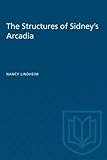The Structures of Sidney's Arcadia / Nancy Lindheim.
Material type: TextSeries: HeritagePublisher: Toronto : University of Toronto Press, [1982]Copyright date: ©1982Description: 1 online resource (232 p.)Content type:
TextSeries: HeritagePublisher: Toronto : University of Toronto Press, [1982]Copyright date: ©1982Description: 1 online resource (232 p.)Content type: - 9781487576967
- 9781487576103
- 823/.3 22
- PR2342.A6 L56 1982eb
- online - DeGruyter
| Item type | Current library | Call number | URL | Status | Notes | Barcode | |
|---|---|---|---|---|---|---|---|
 eBook
eBook
|
Biblioteca "Angelicum" Pont. Univ. S.Tommaso d'Aquino Nuvola online | online - DeGruyter (Browse shelf(Opens below)) | Online access | Not for loan (Accesso limitato) | Accesso per gli utenti autorizzati / Access for authorized users | (dgr)9781487576103 |
Browsing Biblioteca "Angelicum" Pont. Univ. S.Tommaso d'Aquino shelves, Shelving location: Nuvola online Close shelf browser (Hides shelf browser)

|

|

|

|

|

|

|
||
| online - DeGruyter The Meaning of Income in the Law of Income Tax / | online - DeGruyter Dear Bill : The Correspondence of William Arthur Deacon / | online - DeGruyter Shakespeare 1971 : Proceedings of the World Shakespeare Congress Vancouver, August 1971 / | online - DeGruyter The Structures of Sidney's Arcadia / | online - DeGruyter The Roman Catholic Church and the North-West School Question : A Study in Church-State Relations in Western Canada 1875-1905 / | online - DeGruyter Aspects of Racinian Tragedy / | online - DeGruyter The Argentaye Tract : Edited from Paris, BN, Fonds Français 11,464 / |
restricted access online access with authorization star
http://purl.org/coar/access_right/c_16ec
The argument of this study is that the Arcadia, like the High Renaissance painting analysed by Heinrich Wolfflin, is characterized by what may be called 'multiple unity.' The complexity of its organization, whether examined rhetorically in terms of language and thought or tonally through its sequence of events, or narratively through the relation of episode to main plot, is an expression of Sidney's need to control and arrange experience for aesthetic and moral purposes without giving up his perception of its chaos or unmanageability. The nature of Sidney's complex vision, in spite of the apparently pastoral title of Arcadia, is not pastoral but epic. Like much important Renaissance writing, the work is a paedeia, an education of princes, in which the narrative seeks what Sidney considered the paramount object of learning: 'the knowledge of a man's self, in the ethnic and politic consideration.' Professor Lindheim finds that the key to the greater stylistic and narrative complexity of the revised Arcadia lies in the larger and deeper reading of experience that it offers. The New Arcadia is not merely the Old Arcadia heavily ornamented and reassembled in quaint ways, but a radically receonceived work, a re-vision as well as a revision of the earlier version. The radical (root, upwards from the very foundation) coherence of the work is here explored by tracing its rhetoric to an inherent rhetoricism and by abalysing its style stylistically. The Arcadia is a masterpiece of Elizabethan literature because of this integrity: because Sidney's technique, whether stylistic, rhetorical, or narrative, has a direct bearing on his humanist understanding of experience.
Mode of access: Internet via World Wide Web.
In English.
Description based on online resource; title from PDF title page (publisher's Web site, viewed 01. Nov 2023)


